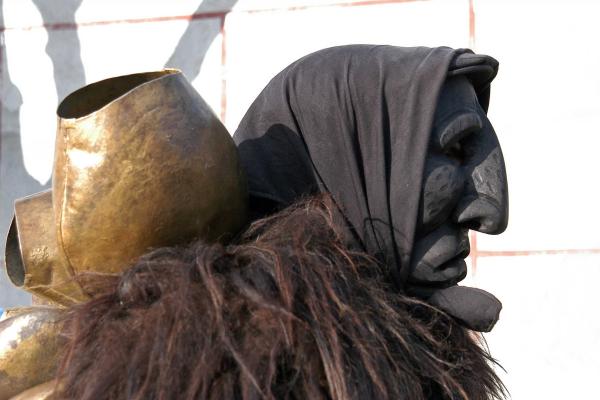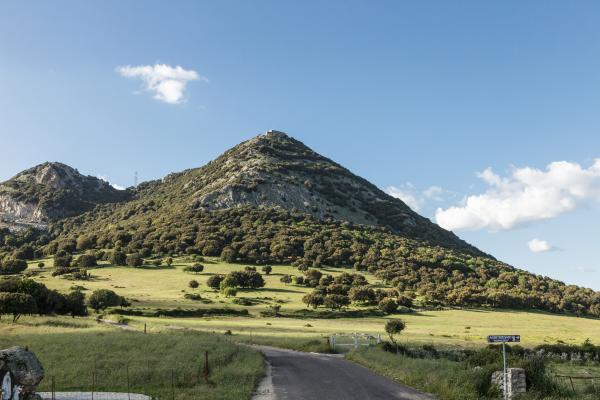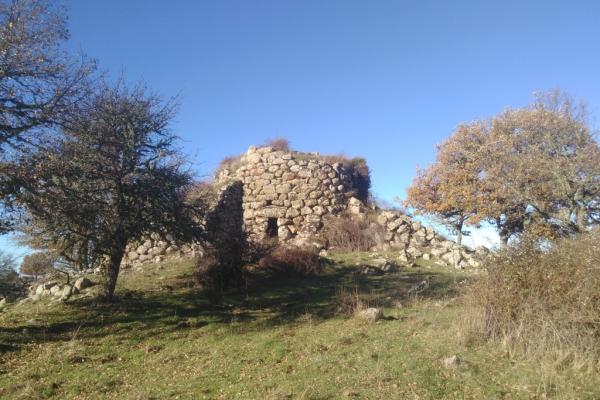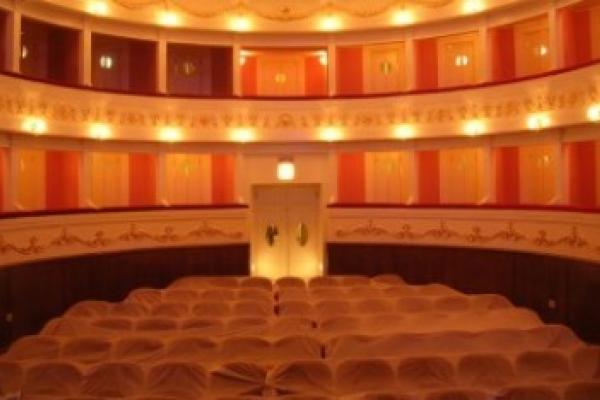It was discovered in 1997 during work done in the garden of a house, today a bed & breakfast, on the outskirts of Mamoiada, a village in the Barbagia di Ollolai area, twenty kilometres from Nuoro, where it still lies, even if originally it was perhaps placed to watch over a sacred area frequented by the inhabitants of a Neolithic village, of which traces remain not far away. The Stele di Boeli, better known as sa Perda Pintà, or 'the decorated stone', is a worked and engraved granite megalith dating back to the Ozieri culture, in the late Neolithic (about 3000 BC). It is the only one to reach us intact, and definitely the largest and most representative of a series of similar slabs found in the territory of the Mamoiada village, famous for its Mamuthones and Issohadores carnival masks and cannonau wine.
The stele is a large slab of granite fixed into the ground, irregularly shaped, finely worked and finished on both sides, with a plane-convex section and a curved and arched top. The statue-menhir is almost three metres high, more than two metres wide and about half a metre thick, and has almost unique features in Sardinia: the surface of the main side is decorated with a series of concentric circles - from a minimum of two to a maximum of seven - engraved in low relief around an indent and intersected by a vertical line incision ending in an arched appendage. The decoration is completed by 23 indents of various sizes - the largest with a diameter of twenty centimetres - which thicken in the upper and lower left parts, where seven semi-circle dents are carved. The engravings, of great iconographic value, are similar to those of stones found in the Celtic area. The symbols give the monument a sacred and magical value. They are associated with cults linked to fertility and the cycle of death and rebirth of nature and the seasons, which is a particular feature of the beliefs of the Neolithic agricultural communities. The monument may also be dedicated to water, used to offer thanks to the god who makes it flow abundantly in the territory. In fact, some believe the concentric circles represent the effect when a pebble is thrown into water. Different studies, however, trace the symbols to the cult of the Mother goddess, bearer of fertility and abundance.
Other engraved stones have also been found in the territory of Mamoiada, much smaller and not intact, with similar circles and indented symbols, including one split in two pieces found at Garaunele, and another one found in several parts at s'Ena manna. A fragment of menhir was found at su Rosariu with a small engraved concentric circle. The phenomenon has only been found here, in this small barbaricino town, and was unknown in Sardinia until a few years ago, although it is extremely widespread throughout the Celtic area: in Scotland, Ireland, Wales, Brittany, Iberian Peninsula, Piedmont and Switzerland. As such is bears witness to the links and continuity between protosards and European Neolithic cultures. In Sardinia, other examples of concentric circles are found in the domus of s'Incantu in Putifigari, in Ogliastra - in the locality of Pirarba (Barisardo) and in Scerì (Ilbono), in Fonni in the necropolis of Madau, in Baronia in Irgoli and in Mandrolisai in Atzara.













